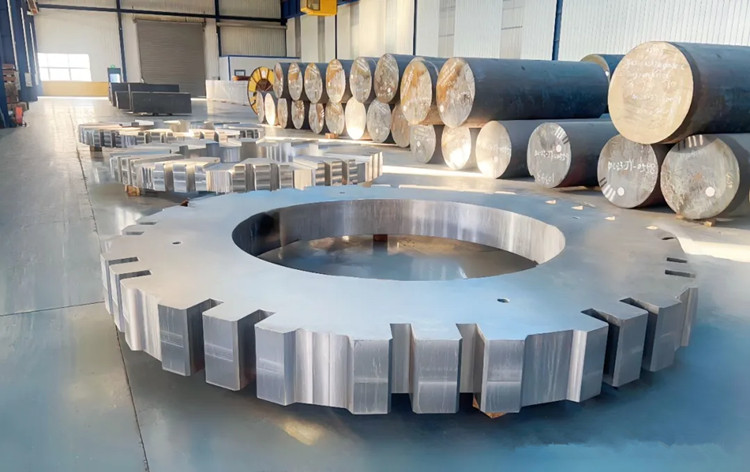- tyler@kirail.com
- +86 15603721115
When designing forged products, material is one of the main factors. There are many factors to consider when selecting the material of forged parts. We should understand the characteristics of various forging materials.
Generally speaking, forging materials are divided into steel, aluminum and copper.

1. Steel
Of all these forging materials, steel forgings are in the greatest demand because of their low material cost. Steel is an iron-based alloy with small amounts of carbon and other elements added to improve various properties. Steel is the most widely used metal material. It is the metal material with the highest strength per unit cost. Steel has a wide range of compositions and a variety of microstructures that can be produced. These ranges allow for a wide range of performance options within the steel alloy family. At low temperatures, the microstructure of steel is usually in the ferrite plus iron carbide phase region, while at high temperatures, the microstructure of steel is in the austenite phase region. Different phases represent differences in crystal structure. In addition, they also represent differences in performance. Forging is performed in the austenite phase region.
Steel is typically composed of 95-99% iron and 0.005-1.0% carbon. Carbon gives the alloy strength and hardenability. Other elements commonly added to steel include: manganese (to improve hot workability); chromium and molybdenum (to improve toughness and hardenability); nickel (to improve strength and toughness); silicon (primarily used as a deoxidizer, but can also improve strength); and aluminum (used as a deoxidizer).
Unwanted residual elements found in steel include phosphorus and sulfur, although sulfur is sometimes intentionally added to improve machinability. Sulfur-containing steel is more difficult to forge. Another residual metal element that is increasing in content as scrap steel production increases is copper.
The copper in automotive wiring is not removed before old cars are converted into scrap for electric arc furnace feedstock. Excess copper increases the hot brittleness of steel. Conventional steel can be divided into alloy steel, carbon steel, and stainless steel. Each type of steel has different specifications.
2. Aluminum
Aluminum is a chemical element with the symbol Al and an atomic number of 13.
Aluminum is noteworthy for its low density and its ability to resist corrosion through a phenomenon called passivation. Aluminum forgings are essential to the aerospace and automotive industries. Compared to aluminum castings, aluminum forgings can be anodized, which results in a better surface finish and strength.
Like steel forgings, aluminum alloys (e.g., AL6061, AL6063, AL7075) are primarily forged at elevated temperatures. However, the heating temperatures are different from those for steel forgings. Therefore, temperature control during forging is very important.
3. Copper
Copper alloy forgings create high-quality parts with material integrity, dimensional tolerances, and surface finish comparable to those made by other mainstream metalworking processes. Due to the hot forging process, forged copper materials are dense and flawless. Heat and pressure forming in precision closed dies results in high dimensional accuracy and consistent repeatability, both from part to part and from batch to batch. Copper forgings are easy to obtain with excellent surface finish and bright appearance.
Copper forgings offer designers a unique combination of properties that other metals cannot match. You can choose alloys to take advantage of the following unique properties:
1) High electrical and thermal conductivity
2) Excellent corrosion resistance
3) High ductility
4) Excellent machinability
5) Excellent joining and plating characteristics
6) Excellent polishing and finishing characteristics
7) Non-magnetic
8) Non-sparking properties
9) Attractive solid color - not just for the surface